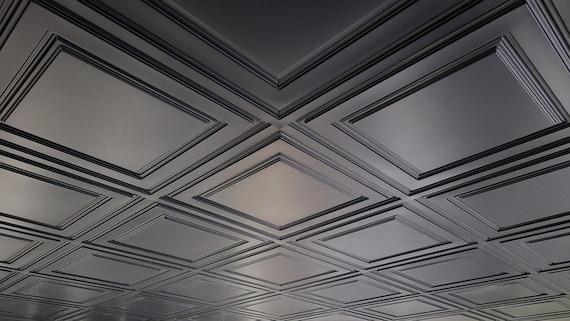Decorative drop ceilings have become a popular choice for homeowners and businesses alike. With a wide array of styles, materials, and installation techniques, they offer an elegant solution to enhance any room’s aesthetic while providing practical benefits. Drawing from my own experiences, I’d love to share insights that will help you make informed decisions about decorative drop ceilings.
What is a Decorative Drop Ceiling?
A decorative drop ceiling, also known as a suspended ceiling, consists of a grid system that supports lightweight panels. These panels can be made of various materials, allowing you to customize the appearance of your ceilings to match your space’s decor.
Benefits of Decorative Drop Ceilings
- Enhanced Aesthetics: Decorative panels come in numerous designs that can beautifully transform your space.
- Sound Absorption: Many drop ceiling materials are designed to absorb sound, making them ideal for offices or homes where noise control is important.
- Easy Installation: Installing a drop ceiling is typically a straightforward DIY project, although professional help is always an option.
- Access to Utilities: A drop ceiling provides easy access to plumbing, electrical, and HVAC systems, making maintenance easier.
Types of Decorative Drop Ceilings
There are various types of decorative drop ceilings, each offering unique features. Here are some of the most popular options:
1. Acoustic Drop Ceilings
These panels are designed specifically for sound absorption, making them an ideal choice for offices and schools.
2. Metal Drop Ceilings
Metal ceilings add a modern touch and can be used for both traditional and contemporary designs.
3. Wood Drop Ceilings
Providing a warm and inviting feel, wood ceilings work excellently in homes, restaurants, and rustic settings.
4. Vinyl and PVC Drop Ceilings
These options are moisture-resistant and are perfect for areas like bathrooms and kitchens.
Choosing the Right Material for Your Drop Ceiling
When selecting materials for your drop ceiling, consider the following factors: aesthetics, functionality, and budget. Here’s a comparison table to help you decide:
| Material | Cost | Durability | Sound Absorption | Moisture Resistance |
|---|---|---|---|---|
| Acoustic Tiles | Low | Medium | High | Low |
| Metal Panels | Medium | High | Medium | High |
| Wood Panels | High | Medium | Medium | Low |
| PVC Panels | Medium | High | Low | High |
Installation Process for Decorative Drop Ceilings
Installing a decorative drop ceiling can be a rewarding DIY project. Here’s a step-by-step guide to get you started:
Tools and Materials Needed
- Ceiling tiles
- Suspension system
- Measuring tape
- Level
- Utility knife
- Chalk line
- Drill and screws

Step-by-Step Installation
- Start by measuring the room to determine how many tiles you need.
- Install the perimeter moldings to set the height of the ceiling.
- Use a chalk line to mark the grid layout on the ceiling.
- Install the main runners and cross tees according to your grid design.
- Finally, place the decorative tiles into the suspended grid.
Don’t forget to follow local building codes and regulations during your installation!
Pros and Cons of Decorative Drop Ceilings
Pros
- Wide range of designs and styles available.
- Quick and relatively easy installation.
- Improves acoustic quality in the room.
- Allows for easy access to concealed utilities.
- Can conceal imperfections in the existing ceiling.
Cons
- Can be more expensive than standard ceilings.
- May not be as durable as traditional plaster or drywall ceilings.
- Requires periodic maintenance to keep clean and functional.
- Can reduce ceiling height in smaller spaces.

Frequently Asked Questions (FAQs)
1. How much does it cost to install a decorative drop ceiling?
The cost varies widely depending on the material, size of the area, and whether you hire professionals or do it yourself. On average, you can expect to pay between $2 to $5 per square foot.
2. Can I install a drop ceiling over an existing ceiling?
Yes, you can install a drop ceiling over an existing ceiling, but it’s essential to ensure the original ceiling is in good condition and can support the weight of the new installation.

3. How do I clean and maintain my drop ceiling?
Most drop ceilings can be cleaned with a damp cloth or sponge. For stubborn stains, you may need a mild detergent. Regular maintenance checks can help detect any damaged tiles that may need replacement.
4. Are drop ceilings energy-efficient?
Yes, many drop ceiling materials offer insulation benefits, which can help improve energy efficiency in your space.
.jpg)
5. Can I paint my drop ceiling tiles?
Some ceiling tiles can be painted, but it’s crucial to use the right type of paint to avoid damage. Always check with the manufacturer’s guidelines before proceeding.